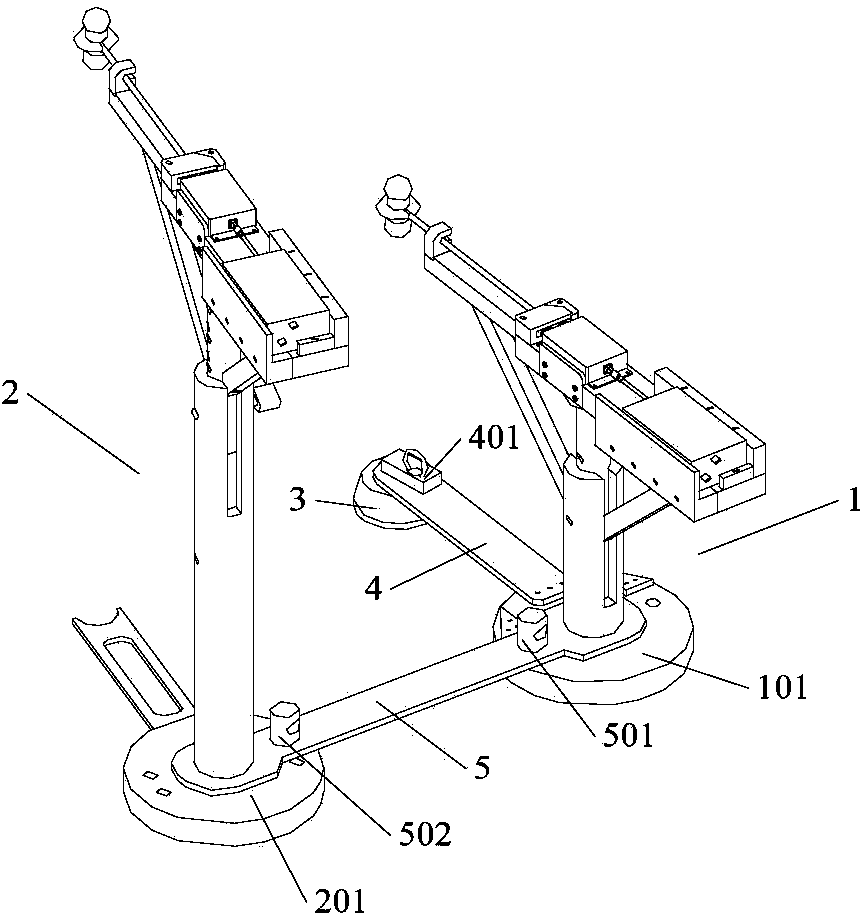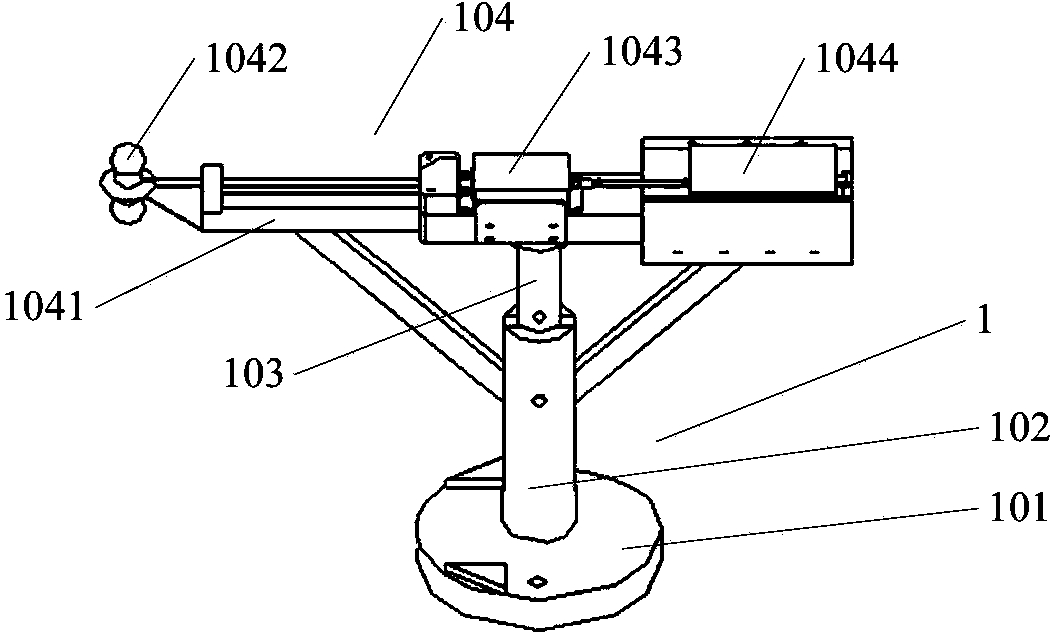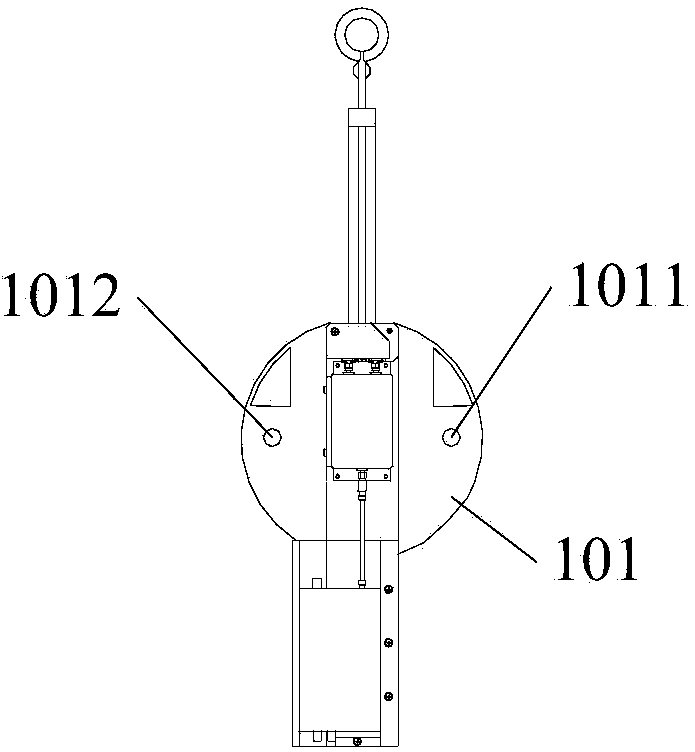Probe calibration device
A technology for calibrating devices and calibrating brackets, which is applied to measuring devices, instruments, measuring electrical variables, etc., can solve problems such as the need to improve test accuracy, low work efficiency, and increased workload, so as to improve test accuracy and work efficiency, and has a simple structure. , the effect of improving work efficiency
- Summary
- Abstract
- Description
- Claims
- Application Information
AI Technical Summary
Problems solved by technology
Method used
Image
Examples
Embodiment 1
[0048] Such as Figure 9 , 10 It is a schematic diagram of the present invention when testing the planar OPMN. The plane OPMN is a square with a side length of 1 meter, the distance between the axis of the first supporting outer column 102 and the axis of the second supporting outer column 202 is 60 cm, and the distance between the axis of the fourth hole 1011 and the first measuring crossbar 1041 The included angle is 89 degrees, the included angle between the fourth hole 1011 and the fifth hole 1012 is 178 degrees, the included angle between the sixth hole 2011 and the seventh hole 2012 is 26 degrees, the seventh hole 2012 and the eighth hole The included angle between the holes 2013 is 156 degrees, and the included angle between the eighth hole 2013 and the ninth hole 2014 is 26 degrees.
[0049] When the plane test positioning starts, first use the reference hole on the positioning reference plate 3 to be orthogonal to the center line of the test area ground for referenc...
Embodiment 2
[0053] The difference between this embodiment and Embodiment 1 is: when the plane OPMN is a square with a side length of 1.5 meters, adjust the height of the first calibration bracket 1 to 0.75 meters, and adjust the height of the second calibration bracket 2 to 1.5 meters. The distance between the axis of the first supporting outer column 102 and the axis of the second supporting outer column 202 is 90 cm, the angle between the fourth hole 1011 and the axis of the first measuring cross bar 1041 is 88 degrees, the fourth hole 1011 The included angle with the fifth hole 1012 is 176 degrees, the included angle between the sixth hole 2011 and the seventh hole 2012 is 40 degrees, and the included angle between the seventh hole 2012 and the eighth hole 2013 is 144 degrees, The included angle between the eighth hole 2013 and the ninth hole 2014 is 40 degrees.
Embodiment 3
[0055] In the field uniformity calibration of transient electromagnetic fields, in addition to the RS105 test item in the US military standard 461F, there are some other test requirements for the uniformity of transient electromagnetic fields. The required test area is the 8 vertices of the cube and the midpoint of the body. Figure 11 to Figure 14 It is a schematic diagram when the present invention tests the cube ABCDEFGH. The side length of the cube ABCDEFGH is 1 meter, the height of the first calibration support 1 is adjusted to 0.5 meters, and the height of the second calibration support 2 is 1 meter. The distance between the axis of the first supporting outer column 102 and the axis of the second supporting outer column 202 is 60 cm, the angle between the fourth hole 1011 and the axis of the first measuring crossbar 1041 is 89 degrees, the fourth hole 1011 The included angle with the fifth hole 1012 is 178 degrees, the included angle between the sixth hole 2011 and the ...
PUM
 Login to View More
Login to View More Abstract
Description
Claims
Application Information
 Login to View More
Login to View More - R&D
- Intellectual Property
- Life Sciences
- Materials
- Tech Scout
- Unparalleled Data Quality
- Higher Quality Content
- 60% Fewer Hallucinations
Browse by: Latest US Patents, China's latest patents, Technical Efficacy Thesaurus, Application Domain, Technology Topic, Popular Technical Reports.
© 2025 PatSnap. All rights reserved.Legal|Privacy policy|Modern Slavery Act Transparency Statement|Sitemap|About US| Contact US: help@patsnap.com



